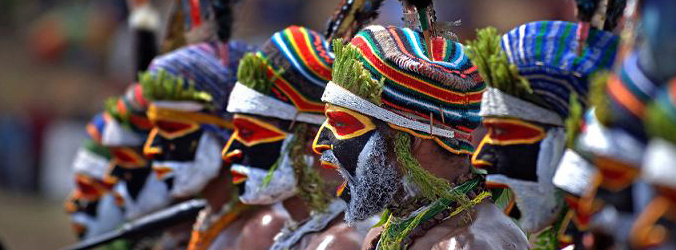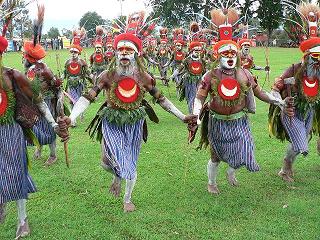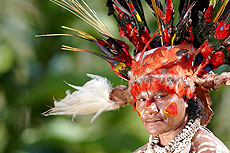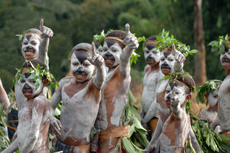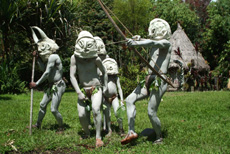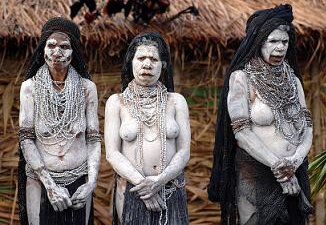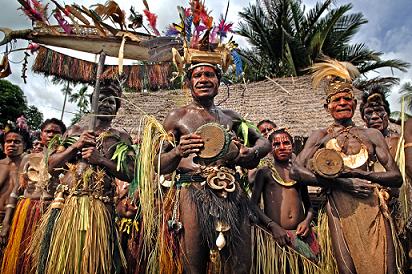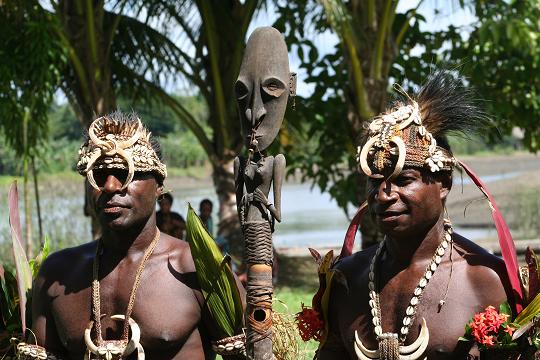Sepik Culture
Head hunters and scarification....
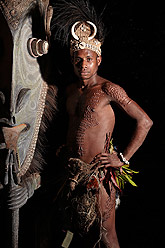 The people of this ecologically diverse region speak more than 250 languages and are knitted together in systems of trade and cultural interaction. Ritual, genealogical and historical knowledge defines one group from another and maintains the distinctions that facilitate trade.
The people of this ecologically diverse region speak more than 250 languages and are knitted together in systems of trade and cultural interaction. Ritual, genealogical and historical knowledge defines one group from another and maintains the distinctions that facilitate trade.
Life in the Sepik area revolves around the river, with men paddling narrow dugout canoes full of goods for trade, women fishing or making sago and children joyfully swinging from trees to splash down in the river. The Sepik is a gallery of tribal art, each village boasts a unique style and every villager is an artisan.
Head hunting was a river culture practice in the Sepik area. The fact that young men could only come of age in these regions by taking a head, suggests how incessant warfare must have been. The Iatmul people of the Sepik would take the heads in battle, boil away the flesh and hang the painted and decorated skulls as trophies in the men's houses. The head hunters were not necessarily cannibals, but many were. Human flesh was eaten until fairly
recently and some of the older men from villages remember tasting it as
children, 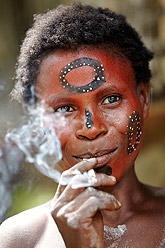 they will tell you that it tasted a little bit like chicken.
they will tell you that it tasted a little bit like chicken.
The men's house is the place where important decisions regarding the village are made, where boys are initiated and become men and ceremonies to please the spirits are performed. Here the crocodile is worshiped as the water spirit. In excruciatingly painful ceremonies young men have their backs cut to resemble the markings of the crocodile, which is a symbol of strength and power.
Karawari Lodge and the Sepik Spirit are the best places to stay to explore all of the mystery and mystique the remote Sepik area has to offer. Trans Niugini Tours provides day touring programs to this fascinating part of Papua New Guinea. Our experienced, knowledgeable local guides will take you on the adventure of a lifetime as you explore the lifestyle and culture of the river villages.



